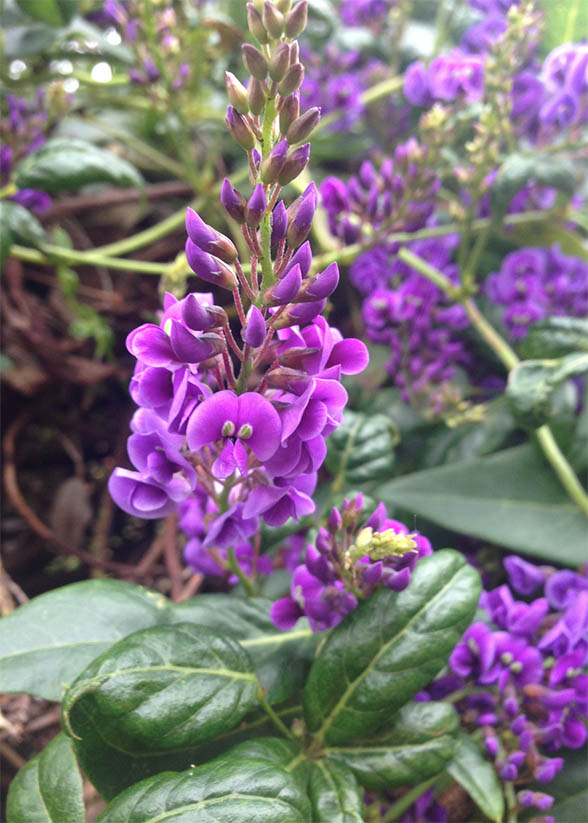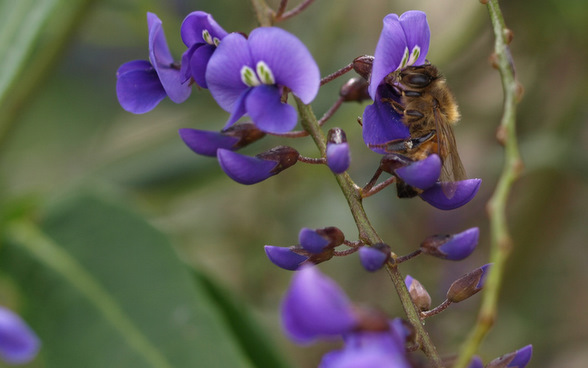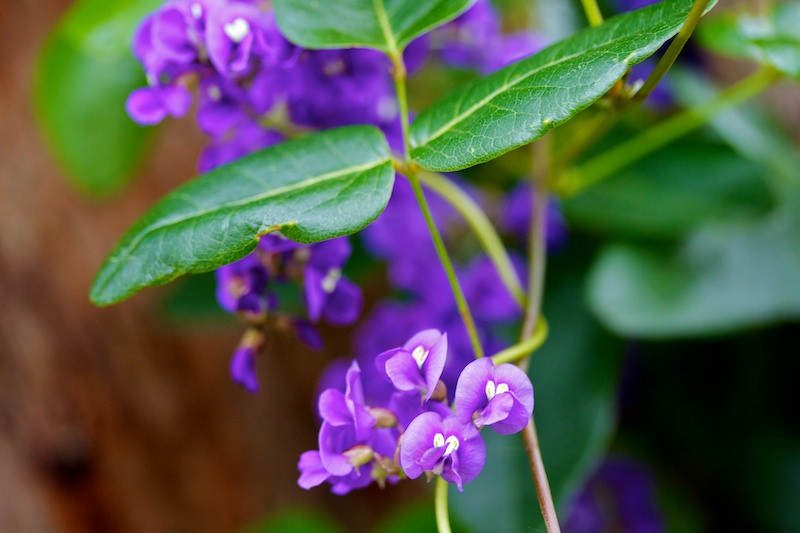Fruits/Seeds
An explosive pea-like pod. Listen for exploding pods on hot summer days.
Field Guide
Improve your identification skills. Download your Native Wisteria field guide here!

The genus name Hardenbergia is named after Franziska Countess von Hardenberg and the species name comptoniana after Mary, 1st Marchioness of Northampton whose husband was Charles Compton.
Twining shrub or climber. Its size varies depending on supporting plants or structures it is growing on.
Usually crowded, 3 and sometimes rarely 5 foliate. Leaflets are 4 – 6 cm long., and do not spread very widely. Size approximately 2–4 mm long and 1 mm wide, thick, concavo-convex (concave on both sides) and pointed at ends.
Blue to purple and in some cases white. Typical pea shape consisting of 5 petals: the "standard", the "keel" (2 fused petals) and two "wings". Flowers are in an often drooping, elongate cluster.
An explosive pea-like pod. Listen for exploding pods on hot summer days.
Improve your identification skills. Download your Native Wisteria field guide here!

First fully open single flower
Full flowering (record all days)
End of flowering (when 95% of the flowers have faded)
Open seed pods (record all days)


Happy Wanderer (Hardenbergia violacea) is native to south-eastern Australia and only has one leaflet.